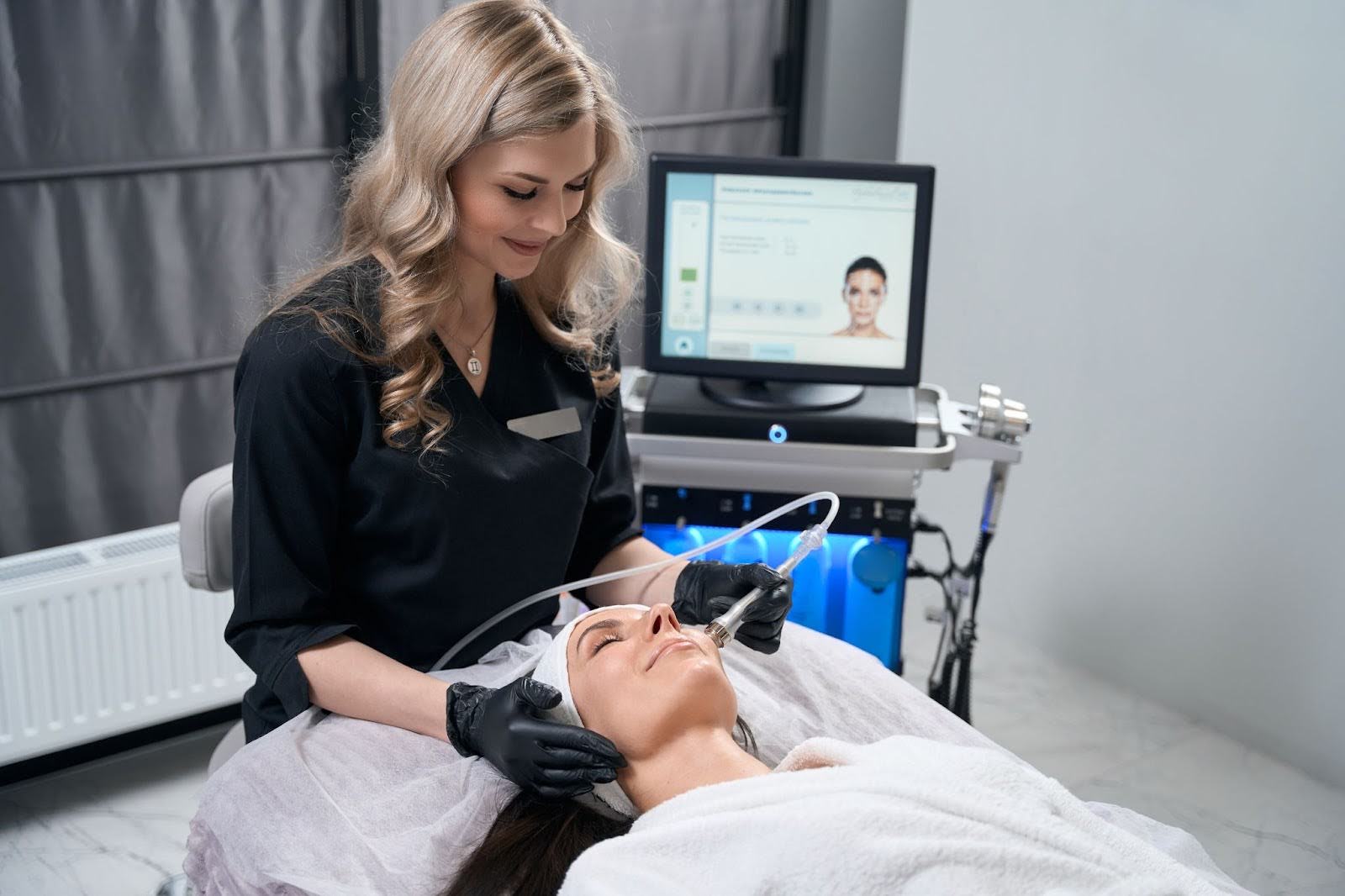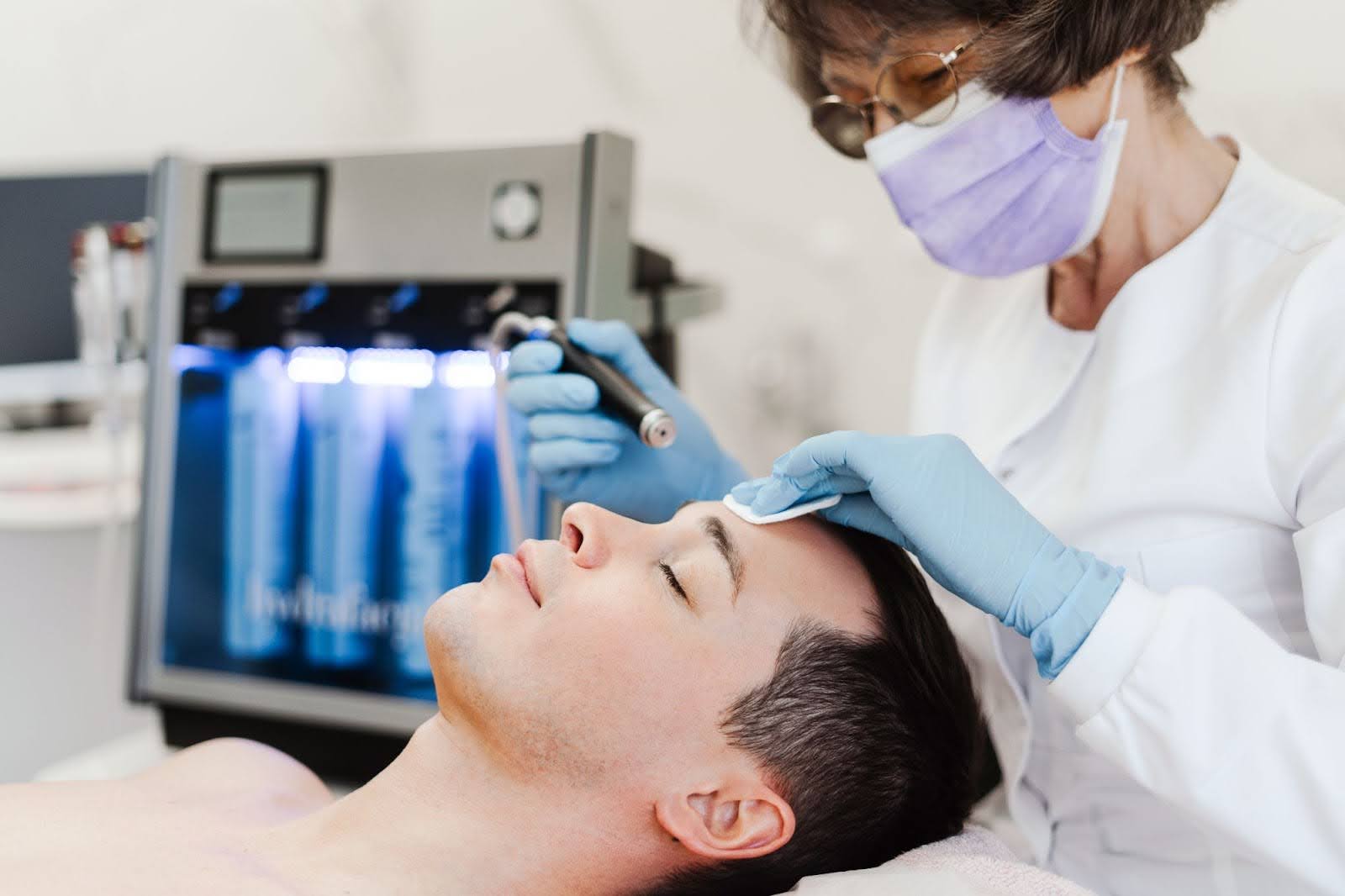
A hydrafacial is a non-invasive skincare treatment that combines cleansing, exfoliation, extraction, hydration, and the infusion of tailored serums during a single session. The procedure uses a specialized wand or device to vacuum impurities from pores while simultaneously delivering active ingredients into the skin. Because it is gentle and often involves minimal downtime, many people choose it as a quick but effective facial option. The question “how much is a hydrafacial?” comes up frequently because pricing fluctuates depending on many variables. To help, this article explores how pricing is determined, typical ranges, and what clients should consider when selecting a provider.
On average, hydrafacial sessions are priced between $150 and $300, depending on the region and provider’s prestige. Basic versions typically fall at the lower end of that spectrum, while deluxe packages with additional steps or premium serums can push toward the upper limit or beyond. Some clients report paying as much as $350 or more for treatments that include multiple add‑ons or extended protocols. These figures provide a ballpark estimate when asking “how much is a hydrafacial,” but real cost depends on customization. Comparing quotes among clinics can help determine whether you’re paying for quality or merely marketing.
Several major factors cause price variation in hydrafacial treatments. From geographic considerations to the treatment plan’s complexity, these elements work together to shape what you’ll pay at the end of your appointment.
Clinics in urban or affluent areas often have higher rent, labor, and compliance costs, which must be recovered through pricing. A spa in a high-traffic downtown district or upscale neighborhood may charge significantly more than a suburban or rural provider, even for a comparable treatment. This price difference often reflects operational costs rather than superior results; therefore, clients should weigh ambiance against value when comparing locations.
If a treatment is performed by a highly trained aesthetician or medical professional, you may pay more for their skill, safety, and experience. This premium can translate into more precise techniques, stronger safety protocols, and customized adjustments for sensitive skin. Experienced providers also tend to deliver more consistent outcomes, which many clients view as worth the extra cost.
Many providers offer booster serums, LED overlays, lymphatic drainage, or specialty treatments (such as brightening, acne, and firming). Each add‑on increases the total cost but also enhances the benefits and addresses specific skin concerns more effectively. Some clinics include these boosters in mid-tier or deluxe Hydrafacial packages, while others price them individually, allowing clients to build their own treatment experience.
Areas with sensitive or problematic skin, deep texture issues, or pigmentation irregularities may require additional care, which can increase the time and cost. Complex cases often require extractions, gentler solutions, or longer sessions to minimize irritation while still achieving results. These additional steps mean that two clients receiving the “same” hydrafacial may have very different pricing because of the care level required.
Some clinics offer reduced per-session pricing for repeat customers or those in membership programs. Bundles may significantly lower the average cost over time while encouraging consistent care for better results. Monthly memberships sometimes include perks like complimentary upgrades or discounts on booster serums, making ongoing hydrafacial treatments more budget-friendly.
To understand pricing, it helps to break down what a hydrafacial involves, typically. The treatment begins with a deep cleansing and exfoliation of the skin’s surface layers to remove dead skin cells and debris. Next comes a light chemical peel or acid infusion to loosen pores, followed by the vacuum‑extraction of impurities. Then, hydrating serums rich in antioxidants, peptides, and hyaluronic acid are delivered to the skin. Some versions include LED therapy, lymphatic massage, or targeted boosters for brightening, firming, or acne. Each extra step or serum bolsters results—but also raises cost.
In many U.S. markets, pricing for a hydrafacial aligns with the $150–$300 bracket, although high-end or luxury clinics may charge more. Depending on overhead and competition, lower-cost regions may see base sessions in the $120–$180 range, while premium urban clinics may surpass $350 for deluxe versions. For those comparing providers, ask for a detailed price breakdown—comprising the base facial, boosters, LED add-ons, and post-care products—to see how the total cost is assembled. A transparent provider helps you evaluate “how much is a hydrafacial” meaningfully.
Not all hydrafacial treatments are created equal—especially when it comes to price. While it can be tempting to choose the lowest-cost option, doing so may compromise the quality of your results. On the other hand, premium pricing doesn’t always guarantee superior care. Understanding what’s behind the cost can help you make a more informed decision for your skin and budget. Below are the key differences to keep in mind.
Lower-priced treatments may cut corners by reducing the session length or skipping important steps in the process. Some clinics may use non-branded serums or outdated machines, which can reduce both safety and results. These options are typically performed by less experienced staff and may not include a personalized consultation.
Higher-cost sessions often include extended time, multiple booster serums, and add-on therapies like LED or lymphatic drainage. They’re usually performed by experienced aestheticians or medical providers using authentic, FDA-cleared equipment. These treatments may also be more comfortable and better tailored to individual skin conditions.
If a clinic offers prices far below the local average, it could indicate a stripped-down version of the treatment. Watch for vague service descriptions or staff who can’t explain what’s included. Always verify that the equipment is genuine and that the clinic provides consultations or patch tests.
A mid-tier price point often delivers both quality and value, especially from reputable providers. You’re more likely to receive personalized care, real-time skin analysis, and results-driven products without excessive upcharges. For many clients, this price range strikes the best balance between affordability and long-term skincare results.
It’s worth considering how a slightly higher cost may translate into clearer, healthier skin over time. Skimping on quality could require more sessions or lead to disappointing results. Investing in the right provider can ultimately reduce costs by achieving better outcomes in fewer treatments.
To get the most out of your investment, start by requesting a complimentary consultation and skin assessment to determine what your skin truly needs. Ask your provider to clarify which steps are included in the base price and which require additional charges, such as boosters or specialty treatments. Make sure the practitioner is well-trained and credentialed, and don’t hesitate to review their before-and-after photos or client testimonials. Comparing membership deals or treatment packages can also help you save money if you plan to book multiple sessions. Ultimately, a provider who clearly outlines costs and results can help you feel confident that the price matches the value delivered.
When evaluating the cost of a hydrafacial over time, frequency matters. Many aestheticians recommend starting with monthly sessions to establish skin health, followed by maintenance sessions every 2–3 months. Because improvements accrue gradually, you’ll often see better value when you commit to multiple sessions. When pricing is bundled or discounted for repeat clients, the effective per-session cost drops. So the real question becomes not just how much a hydrafacial costs once, but how much it costs over a year.
Hydrafacial is usually considered elective cosmetic care and rarely covered by insurance. Clients typically pay out-of-pocket. Many clinics offer payment plans, membership subscriptions, or package deals to make treatments more accessible. Some also run specials or introductory pricing for first-time clients. When planning your skincare budget, include not just the treatment cost but at-home care to extend results.
Although low-risk, a Hydrafacial may require adjustments based on skin sensitivity or response. Sensitive, thin, or reactive skin may need gentler protocols or extra soothing steps, which can increase session duration and cost. Post-procedure redness or sensitivity is common and typically resolves within hours. Providers may include or sell aftercare products; if not, you should budget for recommended skincare supplies, as the treatment is mostly gentle and has low downtime. Costs beyond the session itself are usually minimal but worth accounting for.

Choosing the right place for your hydrafacial goes beyond simply comparing prices—it’s about ensuring safety, quality, and lasting results. Look for providers with strong credentials, thorough training, and positive client reviews to gauge their reliability. Make sure the equipment used is genuine and that any boosters or add-ons meet high standards of quality. It’s also wise to confirm that staff undergo ongoing training and follow strict safety protocols. By prioritizing expertise and transparency over cost alone, you’ll get the best possible value and outcome from your hydrafacial.
To learn more about how much is a hydrafacial, visit our Naples Laser & Skin Aesthetics blogs.
%402x.svg)

.png)
3641 10th St N Suite B, Naples, FL 34103